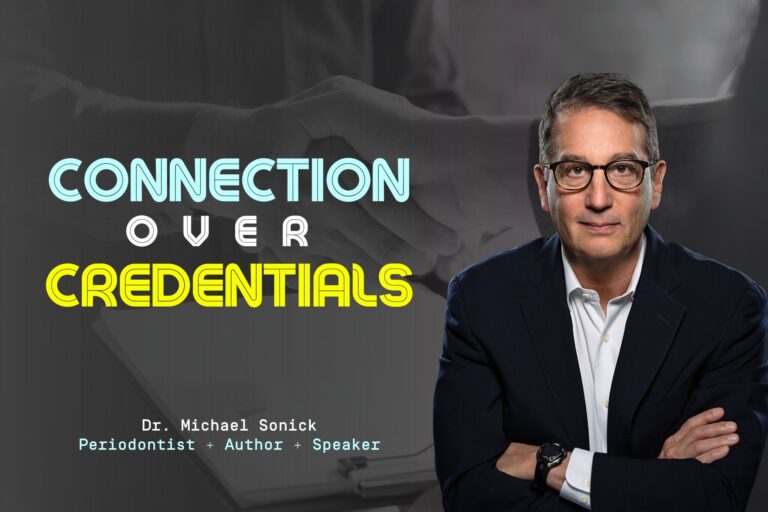As a dentist, the relationship between you and your patients is paramount. It’s a relationship bound by ethical, legal, and moral principles that are core to your mission as a healthcare provider. However, there may come a time when the relationship deteriorates to the level that you need to dismiss a patient from your practice.
Patient dismissal is a sensitive and often challenging topic, requiring careful consideration of legal and ethical considerations. In this article, we will explore the reasons for patient dismissal, its legal and ethical aspects, and provide you with a step-by-step guide on how to write a dental patient dismissal letter. We will also show you an example dismissal letter and discuss best practices to ensure a smooth and professional dismissal process.
What Is Patient Dismissal in Dentistry?
Patient dismissal (also known as patient termination) occurs when a dentist takes steps to end the professional relationship between a dentist and a patient.
While you strive to provide quality care to all patients, certain circumstances may demand that you dismiss one patient in order to better serve all your patients. Patient dismissal should be a last resort when other measures are ineffective. And because dismissal can have significant consequences for both you and the patient, you have to weigh the potential benefits of dismissing a patient against any potential harm it could cause.
To properly dismiss a patient, you must notify your patient in writing and give them sufficient time to find a new dentist. Generally, you’ll make yourself available for emergency care for some time, often in accordance with local statutes.
Patient Dismissal VS Patient Abandonment
Patient dismissal is an organized and professional way of ending your relationship, so don’t confuse it with patient abandonment. Patient abandonment is a type of malpractice that occurs when you terminate the relationship with a patient without proper notice or terminate a patient while an ongoing procedure is in progress.
Patient abandonment could be a legitimate reason for a lawsuit, some of the damages of which may not be covered by malpractice insurance. Establishing a rigid process and strict criteria for executing patient dismissals is essential to ensuring you don’t leave yourself open to legal liability.
Reasons For Dismissing A Patient In Dental Practice
Several reasons may lead you to dismiss a patient in your dental practice. Here are some of the most common, although you may encounter others as well:
Non-Compliance With Treatment Plans
Non-compliance with treatment plans is one of the most common reasons for patient dismissal. You take great care to create dental treatment plans based on each patient’s individual needs, accounting for their oral health condition and goals. However, when your patient consistently fails to follow the recommended treatment, it can hinder the progress and effectiveness of dental care.
Suppose the patient is repeatedly unable to fulfill their responsibilities. In that case, you may dismiss the patient rather than continue to provide care. Otherwise, you’ll continue to spend your time and energy working for a patient who refuses to hold up their end of the bargain. Ultimately, they may even blame you for their lack of positive outcomes, even when they refuse to participate in their treatment.
Failure To Attend Appointments
A profitable dental office is like a well-oiled machine. And when your patients don’t show up for a scheduled appointment, it throws everything out of sync. If a patient continually no-shows for their appointments without providing appropriate notice (as detailed in your service agreement), then you may need to dismiss them as a patient.
Of course, anyone can forget an appointment, so don’t try to cut ties with patients after one missed appointment. But if they display a pattern of behavior that shows a lack of respect for your time and your team’s time, you may need to make the tough call.
Disruptive Or Disrespectful Behavior
Another reason for patient dismissal is disruptive behavior. Mutual respect and cooperation are essential for delivering quality dental care. Chronic disruptive or disrespectful behavior towards the dental team can create a hostile working environment and compromise the quality of care for other patients.
With some behaviors, a warning may be sufficient to avoid further issues. On the other hand, if a patient makes a team member question their safety in their workplace, you may choose to dismiss the patient immediately.
Non-Payment Of Treatment Fees
When a patient doesn’t make payments per the agreed-upon schedule, and your collection efforts don’t produce fruit, you may need to terminate your working relationship with that patient.
We recommend taking all measures possible to avoid arriving at this step, like offering payment plans and proactively communicating with patients about payment options. But if they cannot hold up their end of the agreement, you may need to send a patient dismissal letter.
Treatment By Multiple Dentists
Patients should retain the right to seek a second opinion or get treatments your office doesn’t provide. However, if your patient receives simultaneous treatment from another dentist without telling you, it could impact your treatment plan and ability to provide the best care. The best tool here is communication — encourage your patients to be upfront about seeking second opinions or outside treatments. Don’t be defensive or threatened. But if a situation is problematic and threatens your ability to provide the best care, patient dismissal could be necessary.
Dismissal Is Not A Punishment
It is important to note that patient dismissal is not meant to be punitive or retaliatory. It is a necessary step taken to protect the well-being of both the dentist and the patient. Dentists have a duty to care for their patients, but they also have the right to practice in a safe and respectful environment. Patient dismissal can help you maintain this balance in your office.
While patient dismissal should be seen as a last resort, there are situations where it may be necessary to protect the best interests of both the dentist and the patient. Dentists must approach patient dismissal carefully, ensuring it is done ethically and per professional guidelines.
Legal and Ethical Considerations In Patient Dismissal
When considering patient dismissal, it is crucial to know the legal and ethical aspects of this decision. As a dental professional, you have a duty to provide care to all patients. Still, you also have the right to discontinue that care if the circumstances demand it.
Legal Aspects Of Dismissing A Dental Patient
The legal aspects of patient dismissal can be complicated and vary based on your jurisdiction. So we strongly encourage engaging with legal counsel while creating internal standards for dismissing problem patients. Consider consulting with them when handling particularly tricky individual cases, as well.
Local, state, or national laws may impact how you conduct your patient dismissal process and what you must include in your patient dismissal letter. Familiarize yourself with the local dental board or professional association’s guidelines regarding patient dismissal. And consult with legal counsel to ensure the process is handled correctly to avoid potential legal repercussions.
Dentists should document any incidents or behaviors as they occur, including dates and details of any incidents, to create a timeline of conduct leading to the decision to dismiss a patient. This documentation serves as evidence to support the decision and protect you in case of any legal challenges.
Dr. Bruce J. Zimmerman tells how he avoided a patient abandonment lawsuit by sending the dismissal letter using certified mail that required a signature on delivery and saving a copy of the letter.
Creating a documented and traceable history of your patient dismissal process can help you avoid legal trouble. You can demonstrate your commitment to fairness and transparency by following due process and keeping good records.
Ethical Guidelines For Patient Dismissal
In addition to legal considerations, ethical guidelines play a crucial role in patient dismissal. Yes, as a dentist, you are ethically obligated to provide care without discrimination. But you must also maintain a safe and respectful environment for staff and other patients. Hesitating to dismiss a patient when necessary can put your staff, patients, and business at risk.
Before resorting to patient dismissal, make every effort to address any issues or concerns through open and honest communication. Discuss the problem with the patient openly and honestly, listen to their perspective, and attempt to find a mutually agreeable solution. You can also consider mediation or involving a neutral third party in extreme circumstances.
Also, consider the potential impact of dismissal on the patient’s overall well-being. Dismissing a patient may make them unable to access necessary dental care, negatively affecting their oral health and overall physical and mental health. Carefully weigh the potential benefits and risks before deciding to dismiss a patient.
Finally, ensure your decision to dismiss a patient isn’t motivated by personal biases or prejudices. Each patient should be treated with respect and dignity, regardless of their background, ethnicity, or socioeconomic status. Strive to provide unbiased and equitable care to all your patients, upholding the principles of fairness and justice.
By adhering to the appropriate guidelines, seeking legal counsel when necessary, and approaching the decision fairly and compassionately, dentists can ensure that the patient dismissal process meets the highest standards of professionalism and integrity.
Writing A Dental Patient Dismissal Letter: A Step-by-Step Guide
When you decide to dismiss a patient, you should communicate it effectively and professionally through a dismissal letter. A well-crafted dental patient dismissal letter ensures clarity and understanding between both parties involved.
The dismissal letter serves as a formal notification to the patient of the final decision to terminate the dentist-patient relationship. It is a crucial document that should be handled with care and professionalism while leaving no room for doubt about the outcome.
Essential Elements Of A Dismissal Letter
A dental patient dismissal letter should include the following essential elements:
- Date of the letter
- Patient’s full name and contact information
- Reason for the dismissal
- Reference previous attempts to address the issue
- Explanation of the dismissal process
- Details on continuing care options and referrals
- Contact information for any questions or concerns
You can create a comprehensive dismissal letter without room for ambiguity or misunderstanding by including these essential elements.
Use A Professional Tone In Your Letter
Maintaining a professional and respectful tone throughout the letter is crucial. Avoid using inflammatory language or personal attacks. Focus on clearly stating the reason for the dismissal and providing relevant information to the patient.
A professional tone ensures that the letter is received and understood as intended. Avoiding personal or emotional language will help preserve your reputation and maintain professionalism even in difficult situations.
Example Of A Dental Patient Dismissal Letter
To demonstrate the structure and content of a dental patient dismissal letter, let’s look at an example:
Patient Name
Patient Address
City, State, ZIP
01/01/2023
Dear [Patient’s Full Name],
We are grateful that you have trusted our office with your dental needs. However, we are writing to inform you that we will no longer be able to provide you with dental care due to your consistent lack of compliance with the recommended treatment plan.
Over the past six months, our team has made numerous attempts to address your non-compliance and explain the importance of following the prescribed treatment. Unfortunately, despite our continuous efforts, the lack of progress has prevented us from providing you with the best possible care.
For this reason, we will need to terminate our dentist-patient relationship. In order to allow you sufficient time to find a new dental provider, our office will remain available to you for the next 30 days for emergency treatment only.
We recommend that you locate a new dentist to continue your dental care. If you need recommendations for alternative dental providers, you may contact the local dental society at [insert information].
Our team will gladly provide you or your new dentist with a copy of your dental records upon receiving a signed written authorization request.
We are available to provide any necessary clarification and support during this transition period.
Thank you for your understanding.
Sincerely,
[Your Name]
Best Practices For Dismissing A Dental Patient
Follow these best practices to ensure a smooth and professional dismissal process:
- Create and publish internal procedures for handling problem patients.
- Document all problematic behavior when it happens, no matter how small.
- Create open communication channels with your patients to address them before they grow.
- Notify patients of dismissal through a professional dismissal letter.
- Provide plenty of time to find a new dentist to ensure continuity of care.
- Document the dismissal process to protect yourself against potential legal challenges.
Patient Dismissal Doesn’t Have To Be Hard
Dismissing one of your patients is never an enjoyable process. But if you’re well-prepared and handle the situation professionally, there’s no need for it to be complicated. Use a patient dismissal letter template, show respect for your patient, and do your best to provide future guidance.
Naturally, you want to do your best to help every patient. But you also need to do what is necessary to protect the well-being of your staff, your other patients, and the financial health of your business. Follow the basic steps laid out in this article and consult with your legal advisor and you will be ready to tackle dental patient dismissals with calm and confidence.










